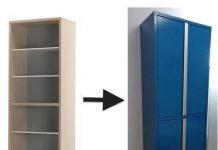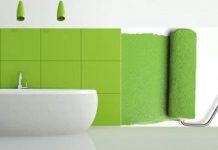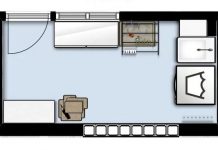![[VÍDEO TUTORIAL] Homemade air purifier with HEPA filter easy!](https://uluvi.com/wp-content/uploads/2022/07/VIDEO-TUTORIAL-Homemade-air-purifier-with-HEPA-filter-easy-696x511.jpg)
Having clean air in your home, workplace and, in general, in closed spaces, is essential for our health. Although we do not see them, there are many particles suspended in the air that can cause allergies and diseases. For this reason, this tutorial will show you step by step how to build your own home air purifier with hepa filter quickly and easily.
Normally, we take for granted that the air in our home or workplace is less polluted than that outside. However, outside this contamination is more dispersed while in closed environments we are exposed to a higher concentration of toxic compounds such as:
- Persistent Organic Pollutants (POPs)
- Volatile Organic Compounds (VOCs)
- Bisphenol-A (BPA)
- Perfluorinated compounds (PFCs)
- Mold, mites, bacteria, viruses, etc.
A home air purifier It is very useful to combat environmental pollution and improve the quality of the air that you and your family breathe daily.

How to make a homemade air purifier
A home air purifier or renovator filters the air like the ones you can buy at appliance stores, but it’s cheaper. The materials needed for its construction are the following:
- Air extractor. You can use a bathroom extractor or those used to ventilate closed rooms.
- HEPA 13 filter. They can be purchased as spare parts for vacuum cleaners and air appliances.
- Cardboard box with lid. It is recommended that it be made of hard cardboard so that the purifier is more resistant.
- American tape.
- Cutter and/or scissors.
- Plug with cable and insulating tape.
The following video tutorial shows the whole step by step to make your own purifier, as well as some general considerations that must be taken into account.
What is a HEPA filter and which one to choose?
Most of the HEPA filters They are made from a continuous sheet of a mixture of intertwined glass fibers. The most important factors to take into account in this type of filter are the diameter of the fibers, the thickness of the filter and the speed of the particles. Also, depending on the filter’s ability to capture particles of a certain size, it will have a rating (MERV rating):
- 17-20: less than 0.3 microns
- 13-16: 0.3 to 1 micron
- 9-12: 1 to 3 microns
- 5-8: 3 to 10 microns
- 1-4: greater than 10 microns
In this sense, the HEPA 13 filters or Certified filters for Dust Class H They trap 99.995% of harmful particles larger than 0.3 microns. Therefore, they are the most appropriate to filter mold spores, dust mites, pollen, carcinogenic dust, aerosols and pathogens such as bacteria and viruses.
On the other hand, its operation consists of capturing harmful particles in the following ways:
- Interception by air flow: the particles rub against the fibers of the filter and adhere to it.
- Direct impact: Large particles collide and get trapped. The effect will be greater the smaller the separation between fibers and the speed in the air flow.
- Diffusion: The smallest particles collide with other molecules preventing their passage through the filter. It usually occurs when the air flow is slow.

The air extractors They are essential in rooms without any type of ventilation and also as a component of air purifiers. When choosing it, the following factors must be taken into account:
- The flow adequate ventilation and air extraction must be guaranteed. Normally, it should be between 6 and 10 times the total volume of the room per hour, although it is recommended that in classrooms and libraries it be between 4 and 5, in offices and basements between 6 and 10 and in bathrooms and kitchens between 10 and 15 To calculate the size of the extractor, you will have to multiply the m3 of the room (height x length x width), by the number of renovations required each hour. For example, a room of 12 m2 and 2.5 m high (30 m3) will need a flow between 120 and 150 m3/h, while an office with the same cubic meters will need a flow between 180 and 300 m3/h.
- The power of an air extractor usually ranges from 8 to 35 W and your choice will depend on the room in which it is going to be placed. For example, in a kitchen a higher power is needed due to the fumes generated during the preparation of food.
- The Noise level It should not exceed 40 decibels so that it is not annoying, although it must be taken into account that the higher the power, the more noise will be generated.

Tips for good air quality
In addition to building your own air purifier, it is recommended to follow a series of tips that will contribute to having a better air quality in any room:
- Periodically ventilate by opening the windows to renew the charged air. If there are no windows, it is essential to have a mechanical means of ventilation.
- Have indoor plants that help purify and improve air quality.
- Eliminate excess moisture to prevent the accumulation of mold and mildew, especially in areas such as the bathroom.
- Avoid the accumulation of dust and the use of chemical products for cleaning and opt for more ecological ones such as vinegar and baking soda.

Ultimately, the use of a home air purifier with HEPA filter It entails some advantages for the health and well-being of people who live or work in the same space due to its ability to improve air quality. I hope that with this tutorial you can build your own purifier easily and quickly. Don’t forget that you will find many more DIY tricks and guides at



